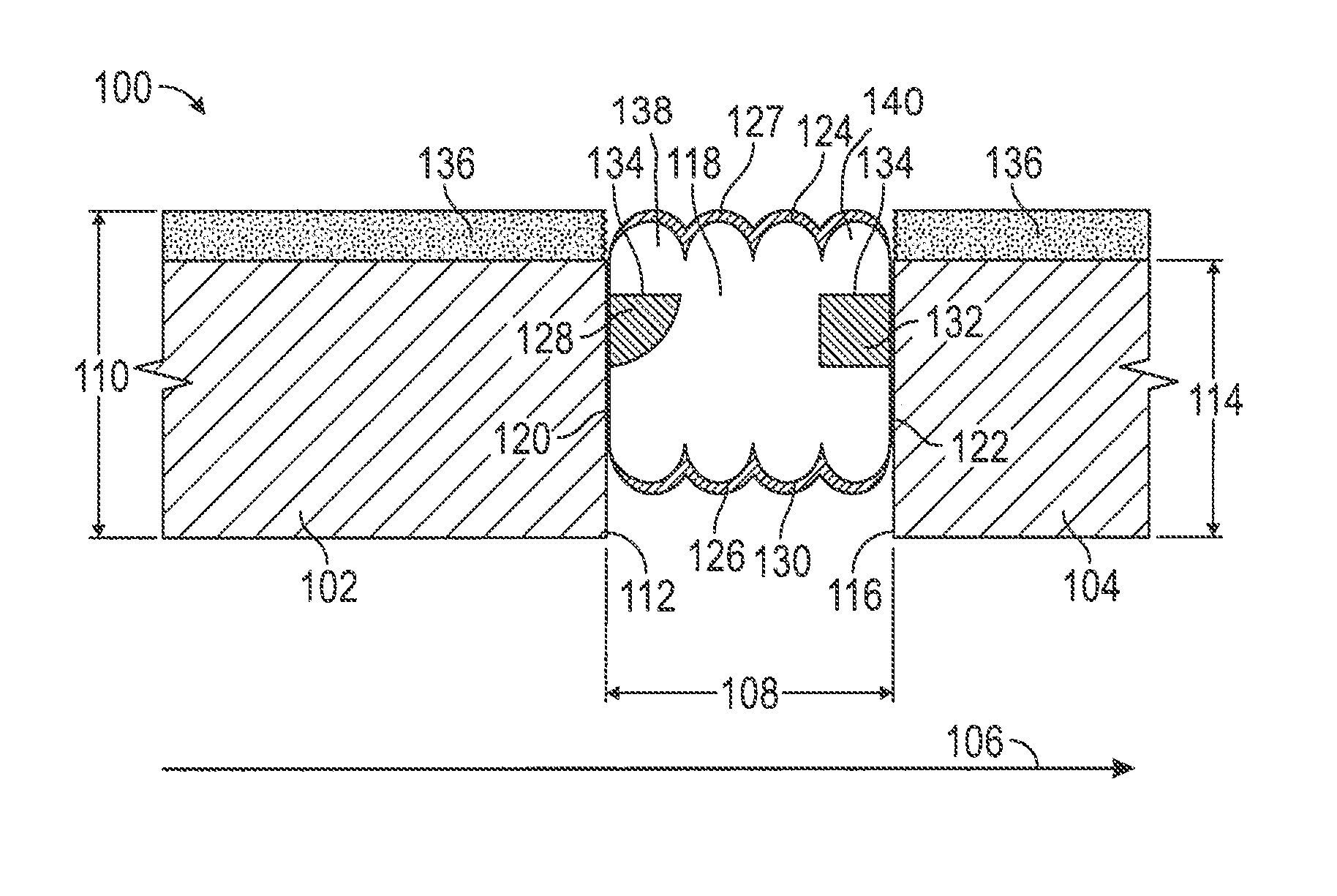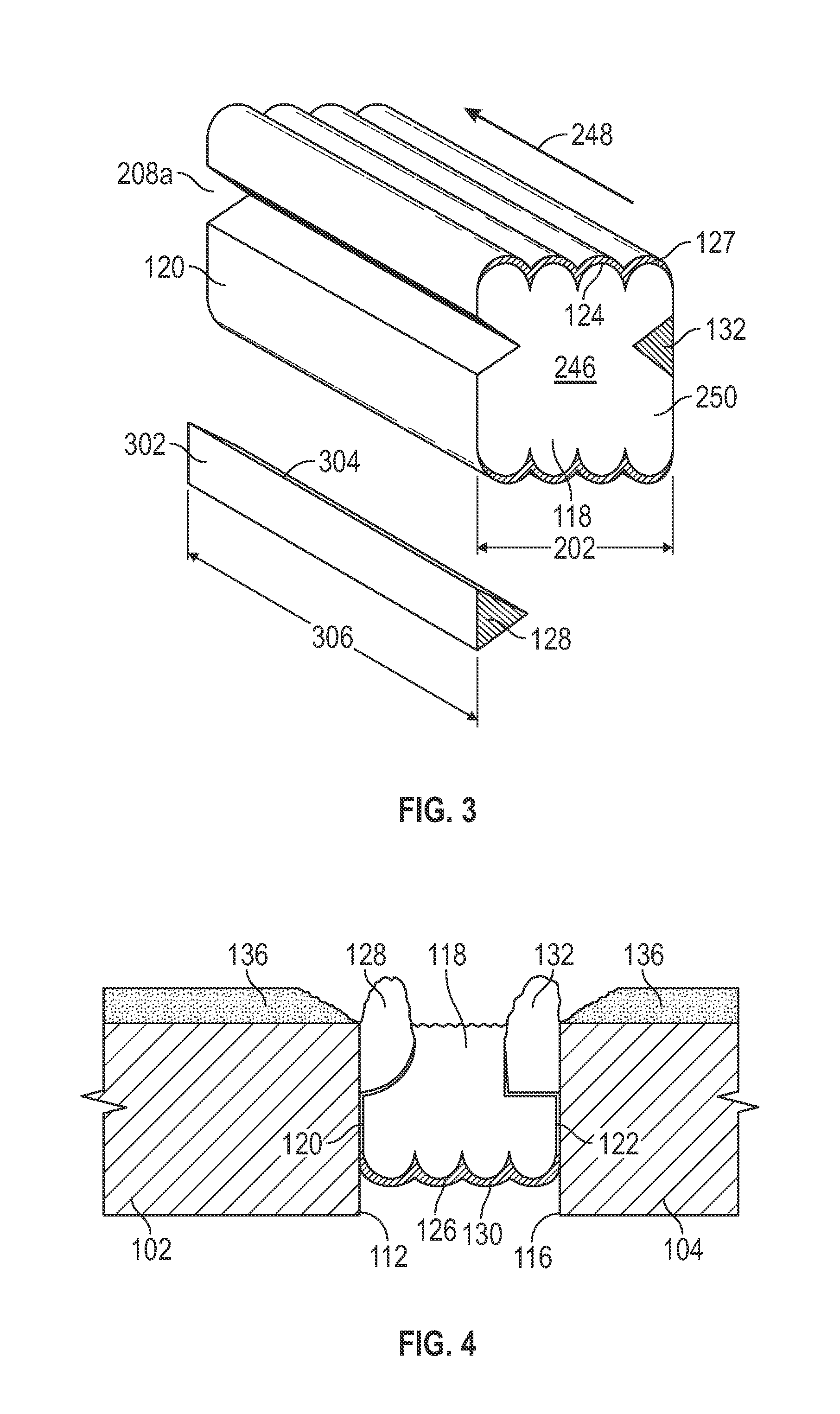Expansion joint seal system
a technology of expansion joints and seals, applied in the direction of construction, building components, construction materials, etc., can solve the problems of requiring replacement of concrete, spalling of concrete, and insufficient protection of the surface of the construction panel perpendicular to the exposed surface,
- Summary
- Abstract
- Description
- Claims
- Application Information
AI Technical Summary
Benefits of technology
Problems solved by technology
Method used
Image
Examples
Embodiment Construction
[0032]The expansion joint system 100 of the present disclosure includes a body of compressible foam 118, at least one intumescent member 128, and may include at least one elastomer layer 127 which provide an integral, but flexible, expansion joint system which has reduced susceptibility to shearing and delamination while providing fire-protection to substrate upper portions, edges and adjacent surfaces. Referring to FIGS. 1-3 and 5, the expansion joint system 100 is illustrated when imposed under compression between a first substrate 102 and a second substrate 104, typically occurring at a joint 103 between two substrates 102, 104. A side view of the expansion joint system of the present disclosure when installed between two substrates to extend above the top of the adjacent substrates is illustrated in FIG. 1. A side view of an expansion joint system of the present disclosure when installed between two substrates at an alternative location well below the top of the adjacent substra...
PUM
| Property | Measurement | Unit |
|---|---|---|
| compression density | aaaaa | aaaaa |
| thickness | aaaaa | aaaaa |
| compressible | aaaaa | aaaaa |
Abstract
Description
Claims
Application Information
 Login to View More
Login to View More - R&D
- Intellectual Property
- Life Sciences
- Materials
- Tech Scout
- Unparalleled Data Quality
- Higher Quality Content
- 60% Fewer Hallucinations
Browse by: Latest US Patents, China's latest patents, Technical Efficacy Thesaurus, Application Domain, Technology Topic, Popular Technical Reports.
© 2025 PatSnap. All rights reserved.Legal|Privacy policy|Modern Slavery Act Transparency Statement|Sitemap|About US| Contact US: help@patsnap.com



